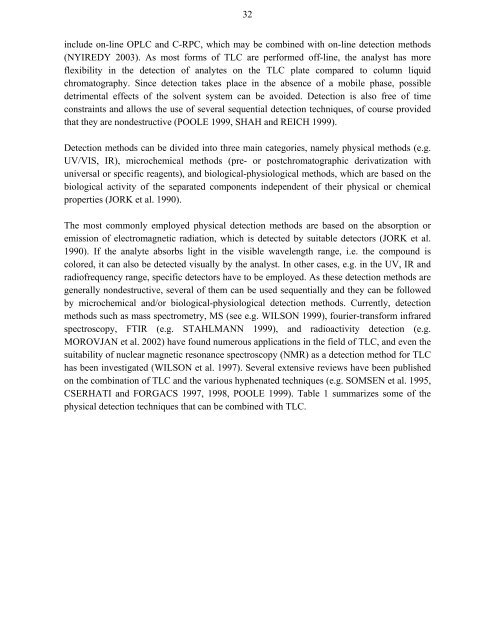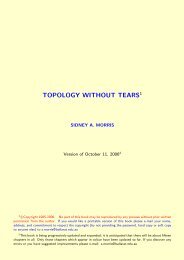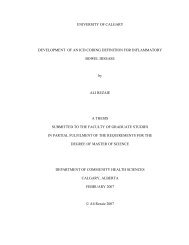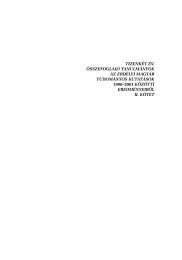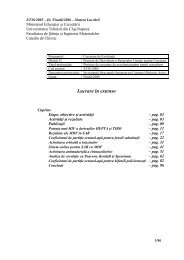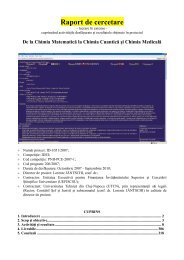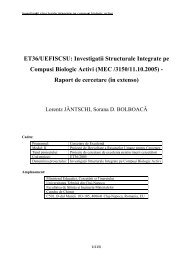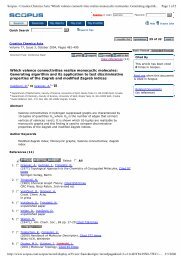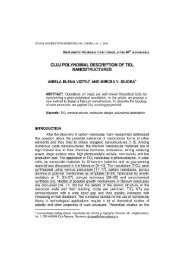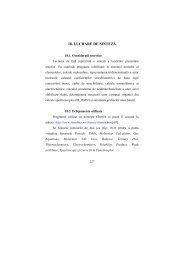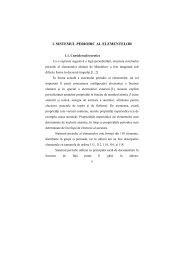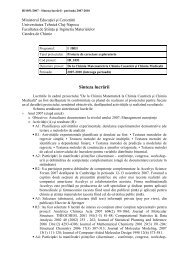Extraction and Planar Chromatographic Separation Techniques in the
Extraction and Planar Chromatographic Separation Techniques in the
Extraction and Planar Chromatographic Separation Techniques in the
You also want an ePaper? Increase the reach of your titles
YUMPU automatically turns print PDFs into web optimized ePapers that Google loves.
32<br />
<strong>in</strong>clude on-l<strong>in</strong>e OPLC <strong>and</strong> C-RPC, which may be comb<strong>in</strong>ed with on-l<strong>in</strong>e detection methods<br />
(NYIREDY 2003). As most forms of TLC are performed off-l<strong>in</strong>e, <strong>the</strong> analyst has more<br />
flexibility <strong>in</strong> <strong>the</strong> detection of analytes on <strong>the</strong> TLC plate compared to column liquid<br />
chromatography. S<strong>in</strong>ce detection takes place <strong>in</strong> <strong>the</strong> absence of a mobile phase, possible<br />
detrimental effects of <strong>the</strong> solvent system can be avoided. Detection is also free of time<br />
constra<strong>in</strong>ts <strong>and</strong> allows <strong>the</strong> use of several sequential detection techniques, of course provided<br />
that <strong>the</strong>y are nondestructive (POOLE 1999, SHAH <strong>and</strong> REICH 1999).<br />
Detection methods can be divided <strong>in</strong>to three ma<strong>in</strong> categories, namely physical methods (e.g.<br />
UV/VIS, IR), microchemical methods (pre- or postchromatographic derivatization with<br />
universal or specific reagents), <strong>and</strong> biological-physiological methods, which are based on <strong>the</strong><br />
biological activity of <strong>the</strong> separated components <strong>in</strong>dependent of <strong>the</strong>ir physical or chemical<br />
properties (JORK et al. 1990).<br />
The most commonly employed physical detection methods are based on <strong>the</strong> absorption or<br />
emission of electromagnetic radiation, which is detected by suitable detectors (JORK et al.<br />
1990). If <strong>the</strong> analyte absorbs light <strong>in</strong> <strong>the</strong> visible wavelength range, i.e. <strong>the</strong> compound is<br />
colored, it can also be detected visually by <strong>the</strong> analyst. In o<strong>the</strong>r cases, e.g. <strong>in</strong> <strong>the</strong> UV, IR <strong>and</strong><br />
radiofrequency range, specific detectors have to be employed. As <strong>the</strong>se detection methods are<br />
generally nondestructive, several of <strong>the</strong>m can be used sequentially <strong>and</strong> <strong>the</strong>y can be followed<br />
by microchemical <strong>and</strong>/or biological-physiological detection methods. Currently, detection<br />
methods such as mass spectrometry, MS (see e.g. WILSON 1999), fourier-transform <strong>in</strong>frared<br />
spectroscopy, FTIR (e.g. STAHLMANN 1999), <strong>and</strong> radioactivity detection (e.g.<br />
MOROVJAN et al. 2002) have found numerous applications <strong>in</strong> <strong>the</strong> field of TLC, <strong>and</strong> even <strong>the</strong><br />
suitability of nuclear magnetic resonance spectroscopy (NMR) as a detection method for TLC<br />
has been <strong>in</strong>vestigated (WILSON et al. 1997). Several extensive reviews have been published<br />
on <strong>the</strong> comb<strong>in</strong>ation of TLC <strong>and</strong> <strong>the</strong> various hyphenated techniques (e.g. SOMSEN et al. 1995,<br />
CSERHATI <strong>and</strong> FORGACS 1997, 1998, POOLE 1999). Table 1 summarizes some of <strong>the</strong><br />
physical detection techniques that can be comb<strong>in</strong>ed with TLC.


